I was going through the LinkedList and seen the implementation in Java. Back in days when I tried and implemented the linkedlist, it was with pointers and addresses and a lot of hard work. With Java the implementation is easier but still took some doing on my part. What I know of linked list is clear from following diagram,where 1,2,3,4 are nodes of the linkedlist.

However In java, the code I came across made me to think of the LinkedList as following diagram.
The implementation code of linkedlist in Java is as follows,
class LinkedListNode
{
LinkedListNode nextNode = null;//consider this member variable
int data;
public LinkedListNode(int data)
{
this.data = data;
}
void appendItemToLinkedList(int newData)
{
LinkedListNode end = new LinkedListNode(newData);
LinkedListNode temp = this;
while (temp.nextNode != null) { temp = temp.nextNode; }
temp.nextNode = end;
}
}
and
public static void main(String[] args)
{
LinkedListNode list = new LinkedListNode(10);
list.appendItemToLinkedList(20);
list.appendItemToLinkedList(30);
list.appendItemToLinkedList(40);
list.appendItemToLinkedList(50);
list.appendItemToLinkedList(60);
}
In the diagram , you can clearly see the node objects are inside the other node objects. Is it really a linked list.Or A parent container holding other container inside it and so on?
